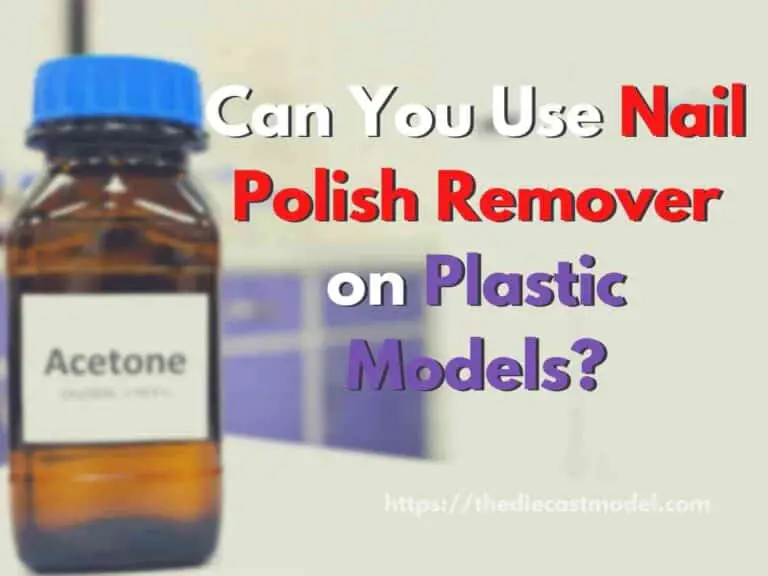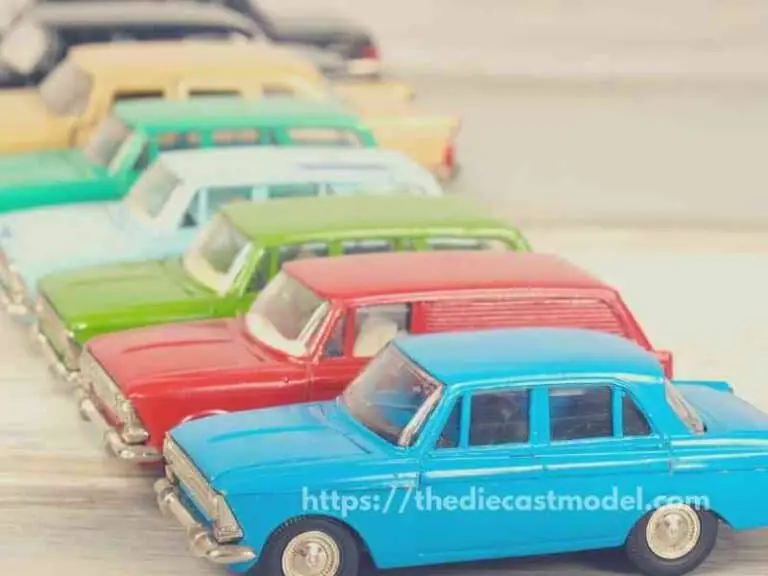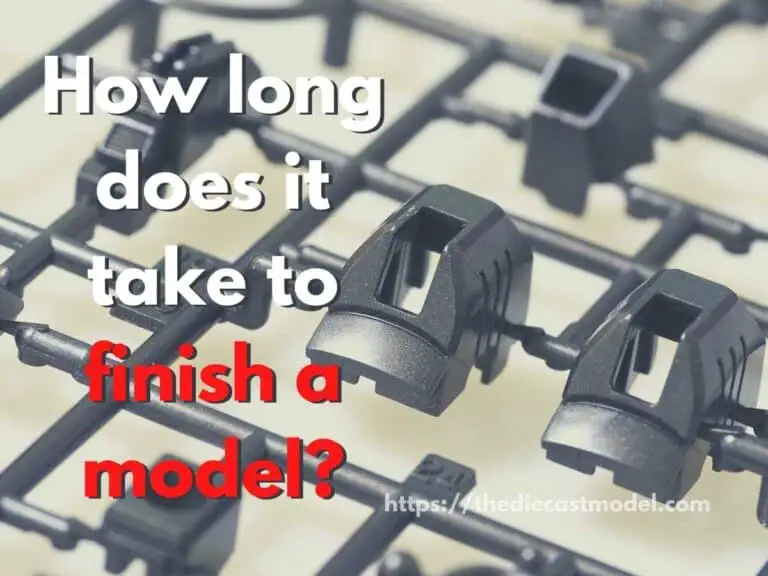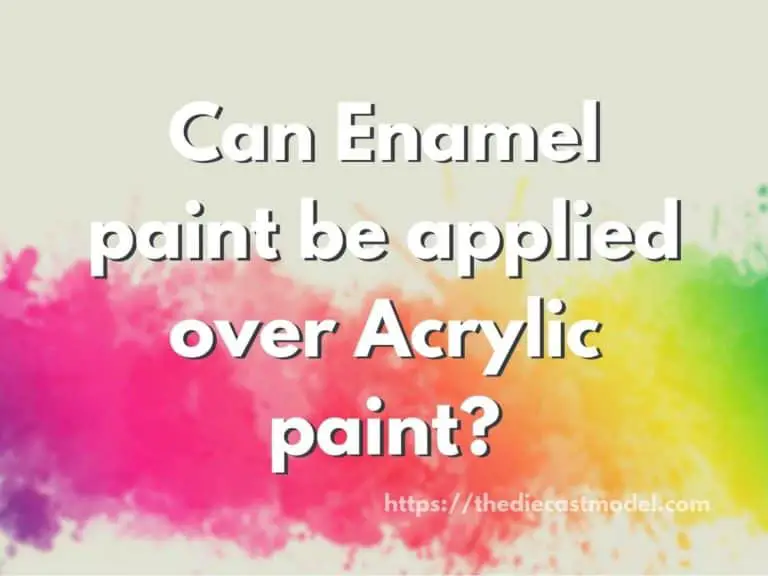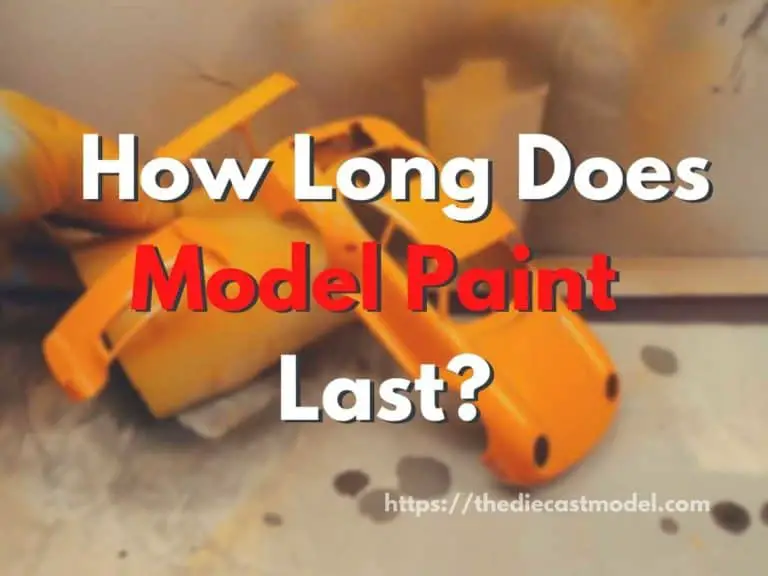What is the thing inside spray cans? I Opened a Spray Can to Figure It Out
What is the rattling sound inside a spray can? So many curious people, such as I, wondered that for so long. After I emptied a spray can after painting some models, I remembered this as one of the things I am curious about. So, I decided to open an empty spray can to find out.
The one that shakes or rattles inside the spray can is called the pea. The pea is a metal, marble, or glass ball that helps mix or emulsify the paint. Mixing the paint is important because the paint requires the aid of propellant in its delivery to prevent over or underpainting.
This blog post reports what I found inside the spray can. I took pictures of the opened can so you can see it too. Lastly, I will discuss what the ball is for and why the tiny ball is necessary for spray paints.
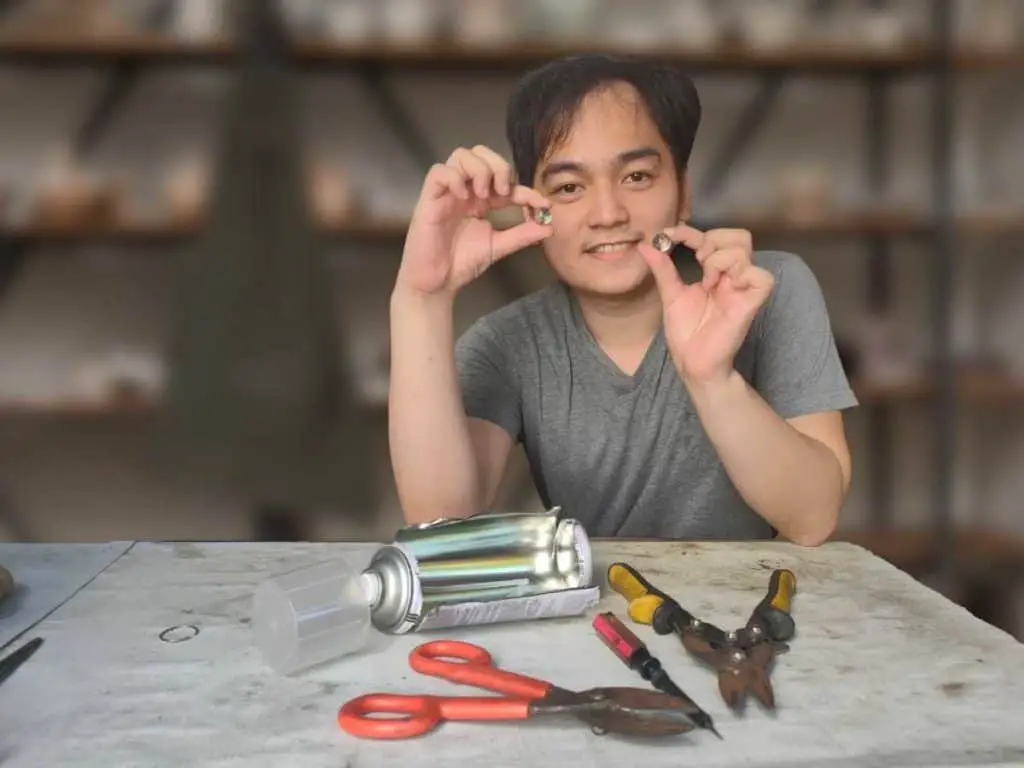
What is the ball inside spray paint cans?
The ball inside spray paint cans is called a pea which is a metal, marble, or glass ball that helps mix the propellant and the paint inside the can.
In preparation for this post, I opened a spray can to look for what was inside.
What you can see in the picture above is me after opening the can and showing the balls that rattle inside.
However, what is it for? Why is that thing necessary? How would I explain what it looks like? That’s what I would like to talk about in this post.
But first, it would be better if I explained what is inside the spray can to understand what the ball inside the spray can is for.
The things inside the spray can are the propellant, dip tube, paint, and pea.
Here is an illustration of what you will find inside the spray can.
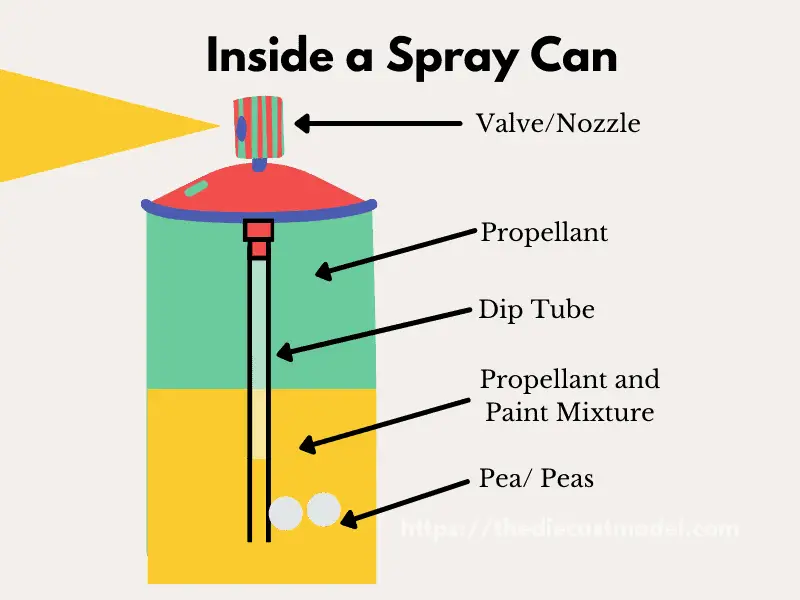
With these, we can understand that the ball or the rattling sound when you shake a spray can come from the pea that repeatedly hits the can’s top and bottom.
However, to understand what it is for, I need to explain the other parts of the spray can.
A spray can have a nozzle, propellant, dip tube, paint, and pea.
The nozzle or the valve is what you are pressing when spraying the can. This alleviates the pressure inside the can to spray the paint.
The dip tube is a strawlike structure inside the spray can, which serves as the straw to pull the paint towards the nozzle.
The paint serves as the pigment of the color. However, the problem with paint is since it is pretty dense, you can’t spray it evenly without the aid of the propellant.
What makes spray paint possible is the propellant and the pressure inside the can.
When spray paint is manufactured, the spray paint is filled with pressure which alleviates when we press the nozzle. The release of the pressure removes paint from the can.
However, the problem with the paint is that it is pretty dense, and trying to spray it without a propellant will result in the paint squirting instead of spraying.
To counter this, a propellant is used. Think of the propellant as a gas that carries the paint.
When the spray paint was first used, the propeller manufacturers used CFC or Chlorofluorocarbons, which are composed of Chloride, Fluoride, and Carbon. However, due to environmental concerns, the use of CFC was stopped.
CFC has been found to harm the ozone layer greatly, and when people figured out that CFC causes enormous damage to our ozone layer, manufacturers looked for alternatives.
That’s why the next propellant that was used was hydrocarbons. These hydrocarbons are composed of hydrogen and carbons.
These propellants are still used now. However, they are greatly discouraged due to their effect on greenhouse gases.
Examples of these hydrocarbons are butane and methane, which we use when cooking.
These hydrocarbons aren’t used on spray paints because of their environmental impacts. That’s why they now use hydrofluorocarbons which are composed of hydrogen, fluoride, and carbons.
This propellant has a minimal environmental impact, so it is what’s being used today on spray paints.
Propellants are essential because they carry the paint, which causes them to atomize or turn into mist. However, the problem is that these propellants are usually gas in nature.
Basic physics or chemistry would tell us that gas (propellant) and liquid (paint) wouldn’t mix well together.
That’s why we mix or emulsify them by shaking them with the help of the pea.
In fact, the rattling sound you hear when shaking a spray can is caused by the pea. (photo below)
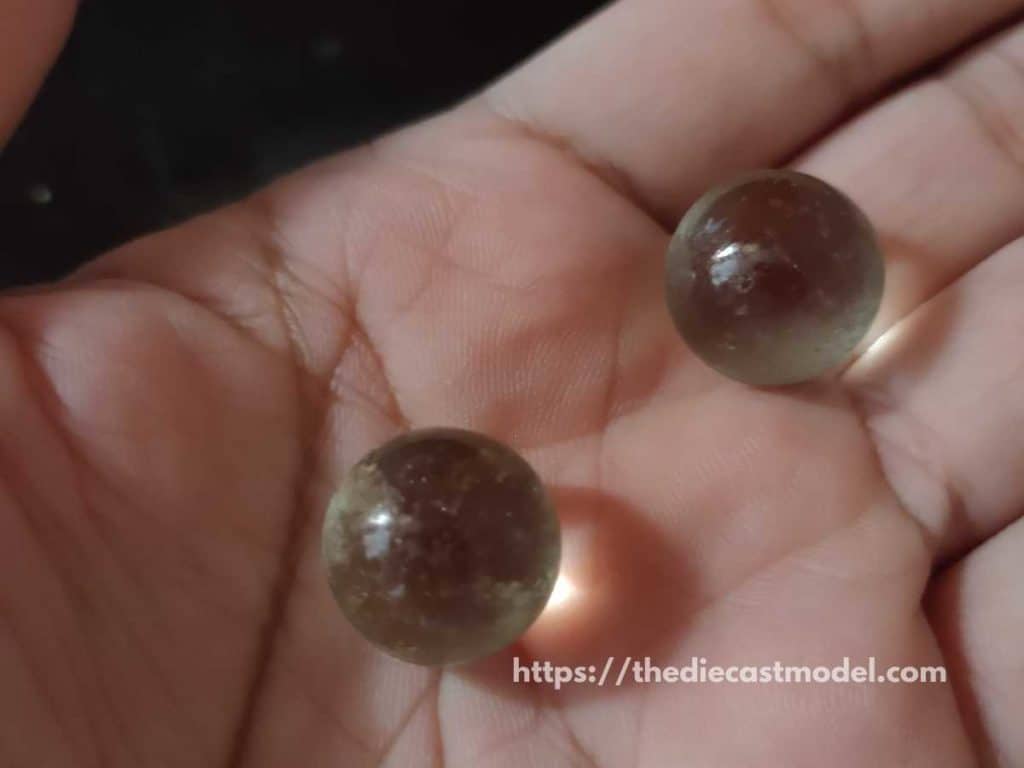
What does the ball in a spray paint can look like?
The ball inside the spray paint looks like an ordinary transparent marble about 1.5 inches in diameter (3.8 cm). However, some manufacturers use metal balls that are silver in color.
The pea looks like a transparent marble or glass ball about 1.5 inches in diameter. If you want to see what the pea or the ball looks like, you may check the photo above.
You may check the size of the pea using the picture below.
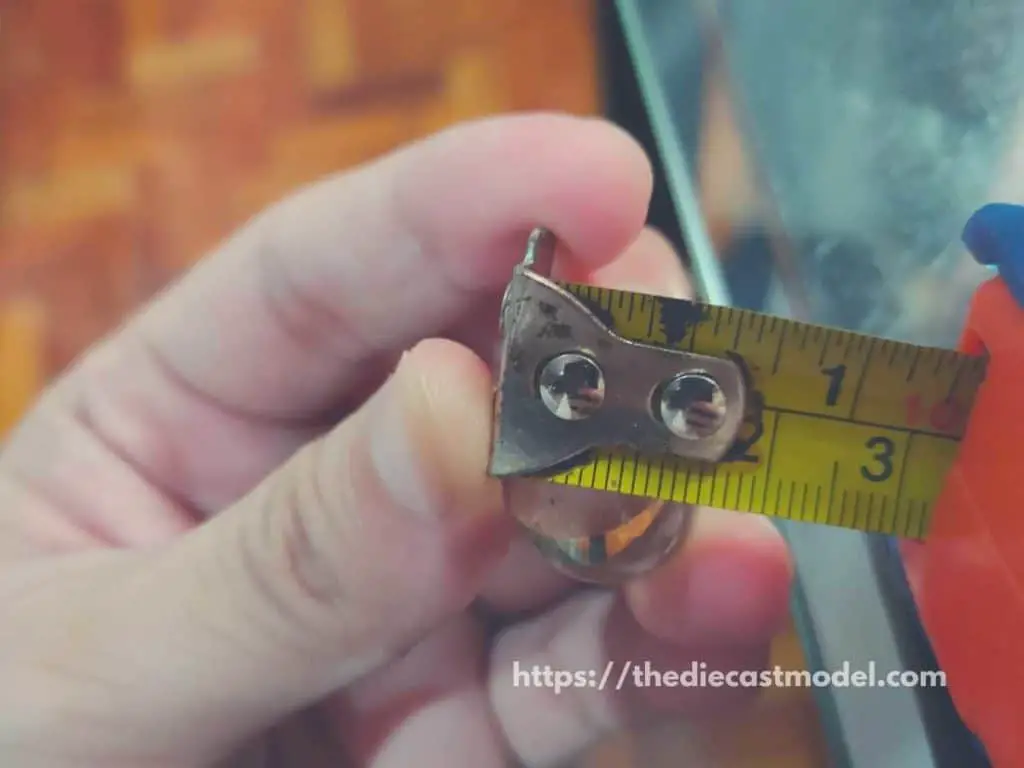
I opened an empty spray paint to do this experiment for multiple reasons.
One reason is that opening a new spray paint with too much pressure inside can be dangerous.
Furthermore, the paint inside might come out, leading to problems in the cleaning process.
Lastly, opening a new spray paint is a waste of money.
Thus, I waited to empty a spray paint before doing so.
When I was young, I was always told that the ball inside was metal. However, I want to see it with my eyes.
When I opened the can, I found two marble balls inside instead of the metal bearing or balls.
Thus, I did some research on the topic.
It turns out that some manufacturers use metal while others use marble. However, there is a minimal difference because both can do the job well.
Furthermore, some manufacturers put 1 pea while others put 2, which in my case, we have seen 2 peas.
In theory, having two peas will make emulsifying or mixing the propellant and the paint easier. That’s why putting two, in my opinion, is a great idea.
Checking the size of the pea, the pea is about 1.5 inches in diameter, which is not too big or small to have an impact on the mixing process.
However, there are still questions that need answering.
For example, why is the pea necessary? Can’t we just mix the can without the pea? That’s what we will talk about in the next section.
What does the Pea in Spray Cans Do?
The pea inside the spray can’s job is to mix the paint and the propellant inside the can. Proper mixing between the propellant and the paint makes sure that the paint is evenly sprayed and prevents paint clumps.
Some people think that the ball inside is to break the paint before spraying, preventing spray clumps. However, that isn’t true.
While not using the pea can cause paint clumps, it is not because the paint has dried inside.
The truth is, the ball serves to improve the mixing between the propellant and the paint.
The propellant serves as the medium to deliver even paint sprays. Without the air or propellant, paint clumps are common.
Think of the propellant as the delivery personnel that carries the paint. Without the right amount of delivery personnel, the delivery wouldn’t be as smooth compared to having enough people.
The reason why the next-day delivery is possible is that the delivery service has enough personnel to do the job. If the people aren’t enough, the delivery wouldn’t be done correctly.
That’s why spray paint will spray the paint and spray some air or propellant. This propellant prevents paint clumps from coming out of the spray can.
Thus, the ball inside the spray can or the pea helps mix the paint and the propellant before using it.
However, why can’t we shake the spray can without the pea? Won’t it mix the paint and the propellant?
The truth is you can mix the paint and propellant inside the can without the pea. However, you will need to shake it more than usual.
Furthermore, shaking a new paint spray is more challenging without the pea since the bottle is almost filled with paint.
Thus, the pea helps the mixing process, and without it, we will need to shake the can more vigorously, which is quite a pain.
That’s why the humble pea is essential. Whether the manufacturer used marbles, glass, or metal for the pea, its job is to help the mixing process since gas and liquid don’t mix well together.
So, next time you shake your spray can before using it. Remember that shaking the can is necessary since it will ensure that the ingredients inside the can mix together.
What’s next? I always use spray paint, but many people wonder if these paints can be used on models. So, I made a blog post explaining how I use this cheap alternative paint while still achieving a high-quality paint finish. So here is the post: Can you use spray paint on models?

